Traditionally, the summer transfer window has been where fans of clubs in the Premier League and beyond can focus their energy during European football’s increasingly diminishing offseason.
But these days, the clamor to see the latest kits unveiled ahead of the upcoming campaign is almost as intense as the yearning for new signings. A whole industry has sprung up online bringing official and leaked images of new home, away and third jerseys to fans for them to rate and slate. That doesn’t even cover the wild world of matchday warmup kits, where it seems as though anything goes when it comes to the patterns and colors deployed by designers.
But if you think designing a football kit is easy and that anyone can do it, think again.
– Premier League 2025-26 kits: Ranking every jersey released
– LaLiga’s top 2025-26 kits: Barça, Real Madrid, Atlético, more
– Wrexham celebrate Wales-Argentina connection in stunning kit
“There’s no other business in the world where your customers are actually paying you money to then celebrate and wear your brand wherever they go,” said David Bruce, chief business officer at Sunderland, newly promoted back to the Premier League for 2025-26 after eight years away. “And then they show it off to all their friends, families and followers.
“They’re walking, talking billboards for the football club, so we have to pay attention and give it the care and respect it deserves. It’s their expression of desire and belonging [to the club], and their connection is the shirt. If you get it right, they’ll buy it.”
Step 1: Creating a concept
The first stage of designing a Premier League kit — clubs and designers begin to discuss potential approaches, sources of inspiration and other such creative jump-off points with each other — generally starts well over a year ahead of any planned release. That means the process of designing Sunderland’s home kit for the 2025-26 season began while the club was still in the second-tier Championship.
“The concept needs to be really anchored in purpose and really anchored in reason,” Bruce told ESPN. “Things are briefed 18 to 20 months before [the kits] come out, so we looked at what’s ahead of us, what’s going on in a particular season. [We wondered] how we could create something that can really land a great story that we know fans will get excited about.”
Sure enough, the Black Cats’ and manufacturers Hummel decided to use the Keel Crossing, a brand-new footbridge across the River Wear, as inspiration for the 2025-26 home kit. The £31 million bridge will connect the city center to the Stadium of Light when it opens this summer, so as a basis for a Sunderland kit, it was both timely and symbolic of the link between the people of the city and their beloved football club.
Rob Revell, who has been designing kits with Hummel for almost a decade and is in his third year working with Sunderland, knew from experience that the bridge concept was a winner having been through the design process thousands of times during his career.
“I’d say 50% of the clubs just don’t give you a brief,” he told ESPN. “It’s good, in a way, because you can kind of guide them. But with Sunderland, it was a case of cutting it down from their concepts. There were maybe three different briefs [for the home kit] and this is the one we went with.
“It’s an interesting one, but we were lucky that the timings worked out because we’re talking about the construction of something — it’s all based on a new bridge.”
Step 2: The design process
With the concept chosen, work then begins to transpose that onto a football shirt. It can be a long journey that involves gathering research, drawing up initial sketches, collating technical information and feedback, and steadily creating a technical document covering every single facet of the kit in granular detail — from the colors and graphics, to the materials and cut.
As the project’s lead designer for Hummel, Revell is charged with creating and delivering the final set of shirt, shorts and socks that will be worn by the players on the pitch and the fans in the stands, repeatedly drafting and refining his designs along the way. However, he doesn’t work alone and is assisted by a development team at Hummel as well as a small team on the Sunderland side to hammer out the fine details.
“The design is the easy part,” said Revell. “But then you have to give it to a product development team and say, ‘Right, this is what I want, can we afford this please, can I have this? Can I have this graphic here?'”
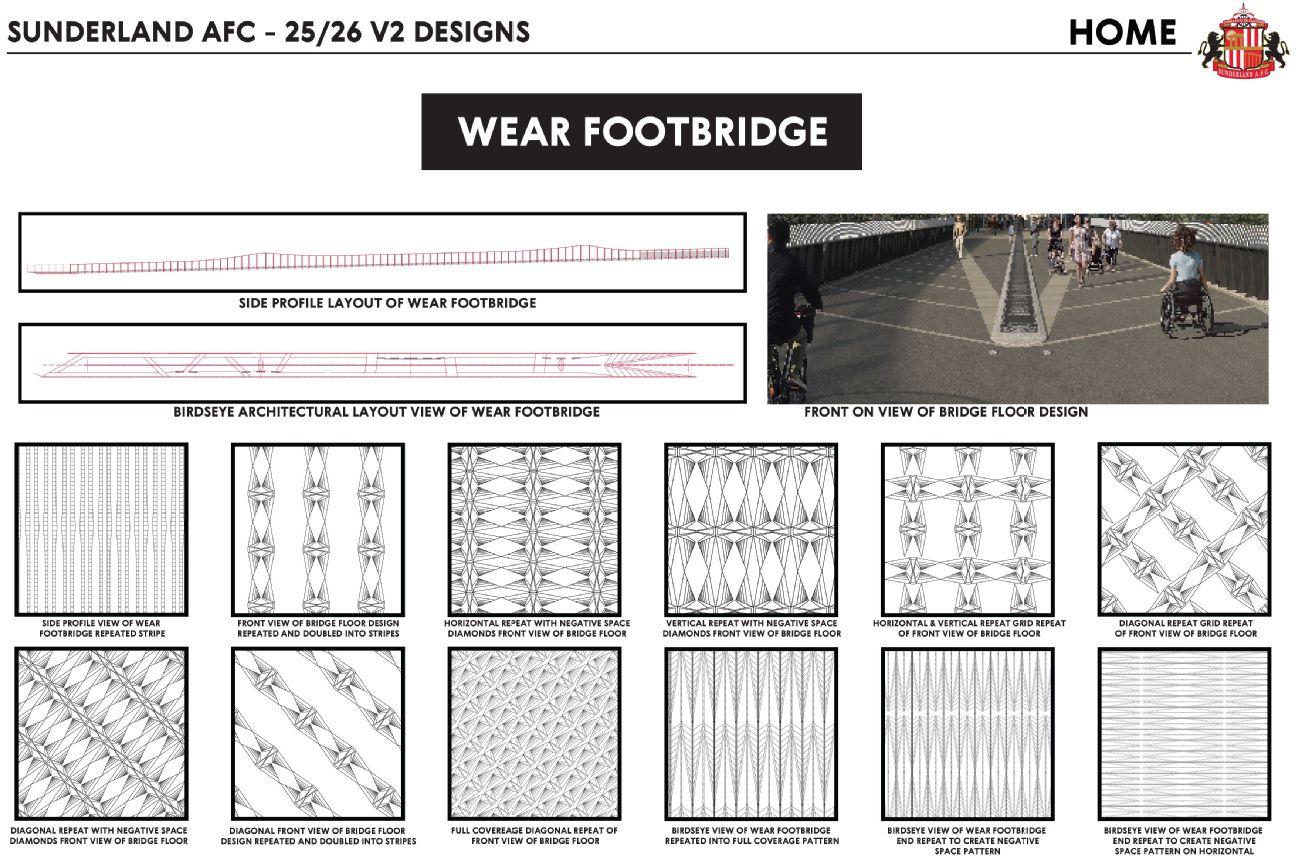
Having been allowed access to the diagrams by the local council, Revell took interesting elements of the architectural forms of the bridge such as the railings, the paving, the lighting and even the negative space of the structure.
“I was really lucky the council in Sunderland are really behind the club and they work really closely with them,” he said. “They see how important the stadium is to the fans in the city center and obviously this bridge is paramount to that. We went to their offices and they took us through all their presentations and we were lucky they gave us architect sketches of what [the bridge] was going to be and so it was amazing.”
Revell then hand-drew a selection of patterns inspired by the bridge plans and began exploring ways to meld them into a football kit. As a starting point, he incorporated those details into an initial slate of 20 different jersey designs, each featuring different elements of the bridge within the stripes of the jersey.
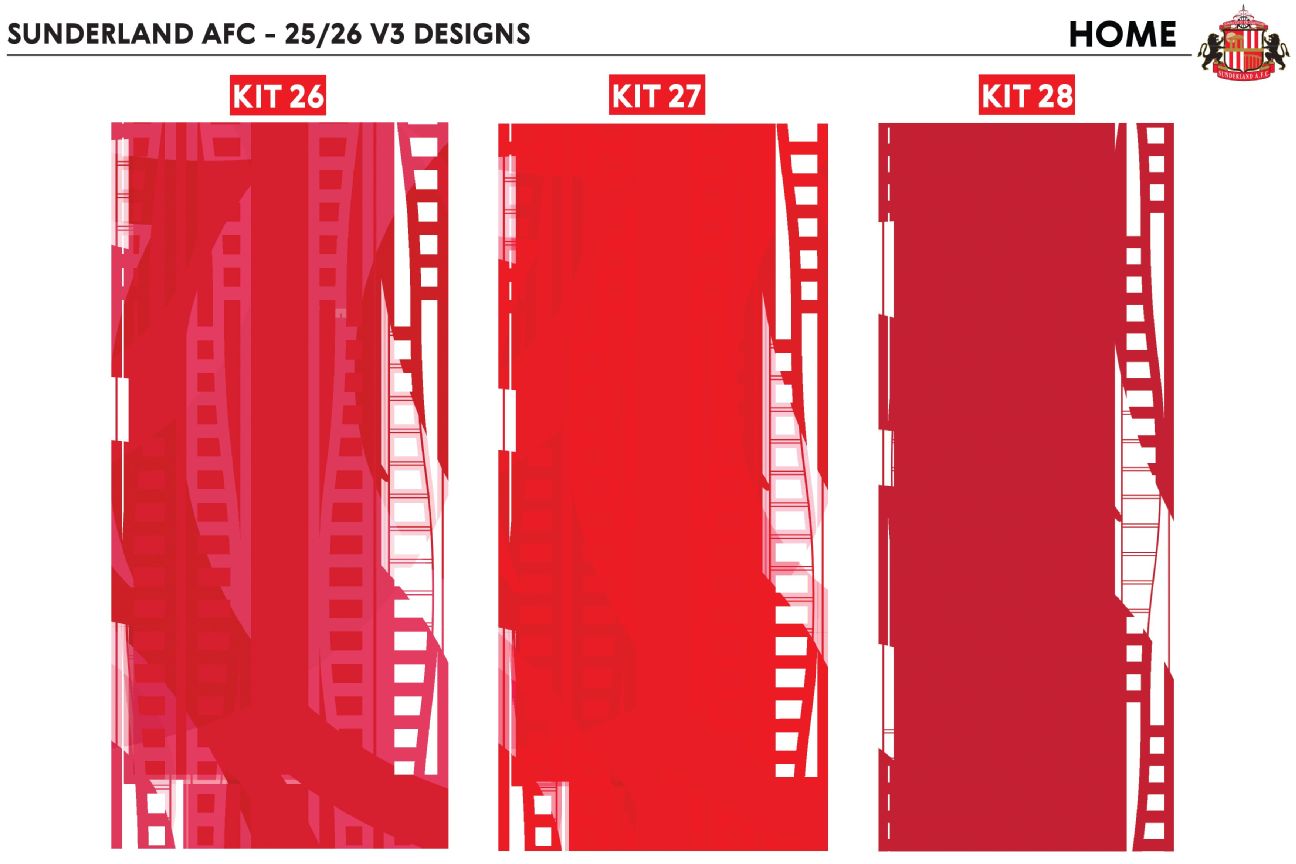
After receiving feedback from the club, he then produced a further dozen designs, this time adding in shorts and socks to give a sense of how the full kit would look. Then, after another round of consultation and mining the construction blueprints for more inspiration, Revell turned out a further 32 designs ranging from using the bridge details as refined pinstripes to creating jagged, angular bands that ran down the shirt.
As is often the case, having gone through more than 60 different possibilities, Revell eventually realized that his original idea was the best. The architectural illustrations of the bridge’s side elevation were used to inspire a linear graphic that runs vertically down within the white stripes.
To ensure that the two-dimensional design works as an actual garment, a graphic known a “sublimation” — using lines similar to the contour lines used to indicate changes in height on a map — is created to illustrate how the shirt will fit on the wearer. This is then sent to the manufacturers for approval.
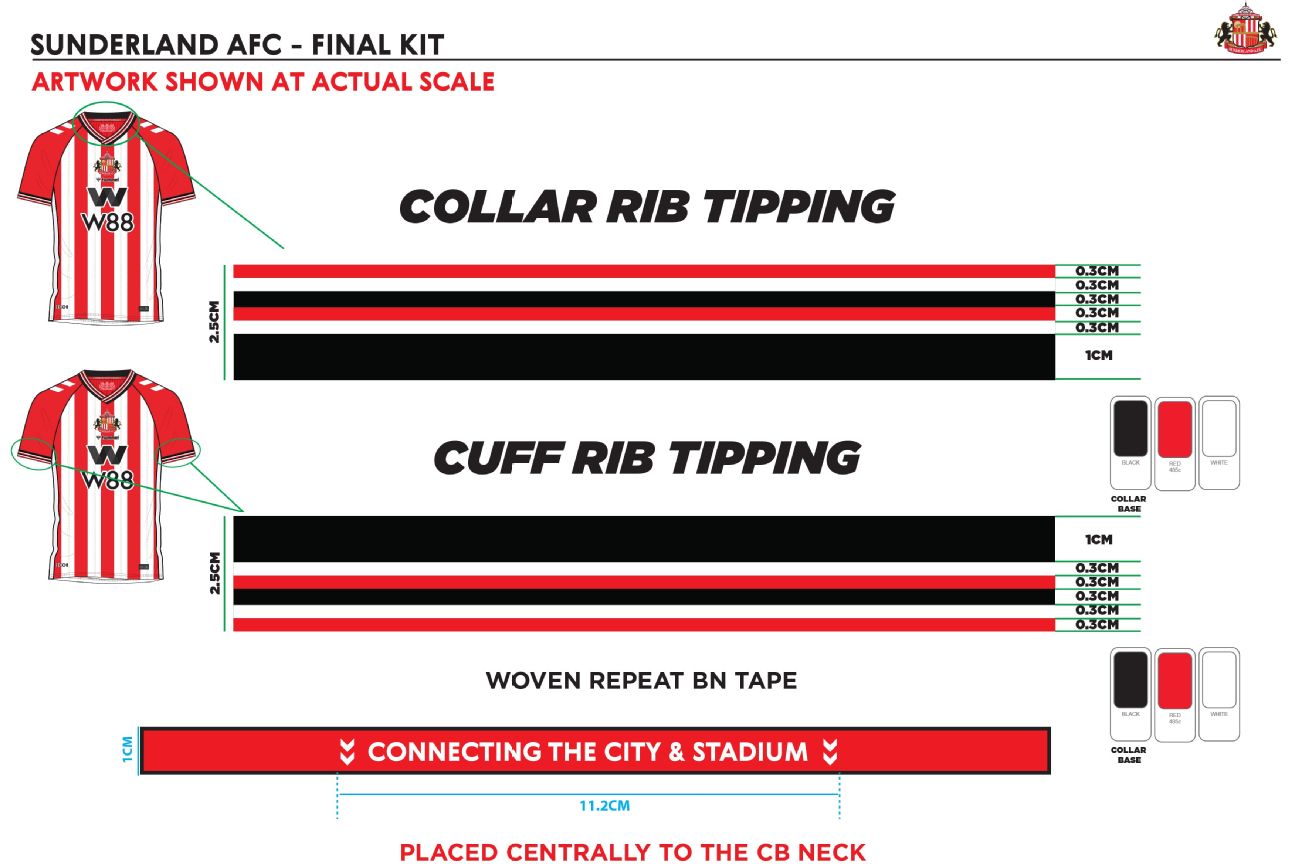
The kit is then capped off with all the extra flourishes, like the striped pattern on the sleeve cuffs and V-neck collar (known as “rib tipping”).
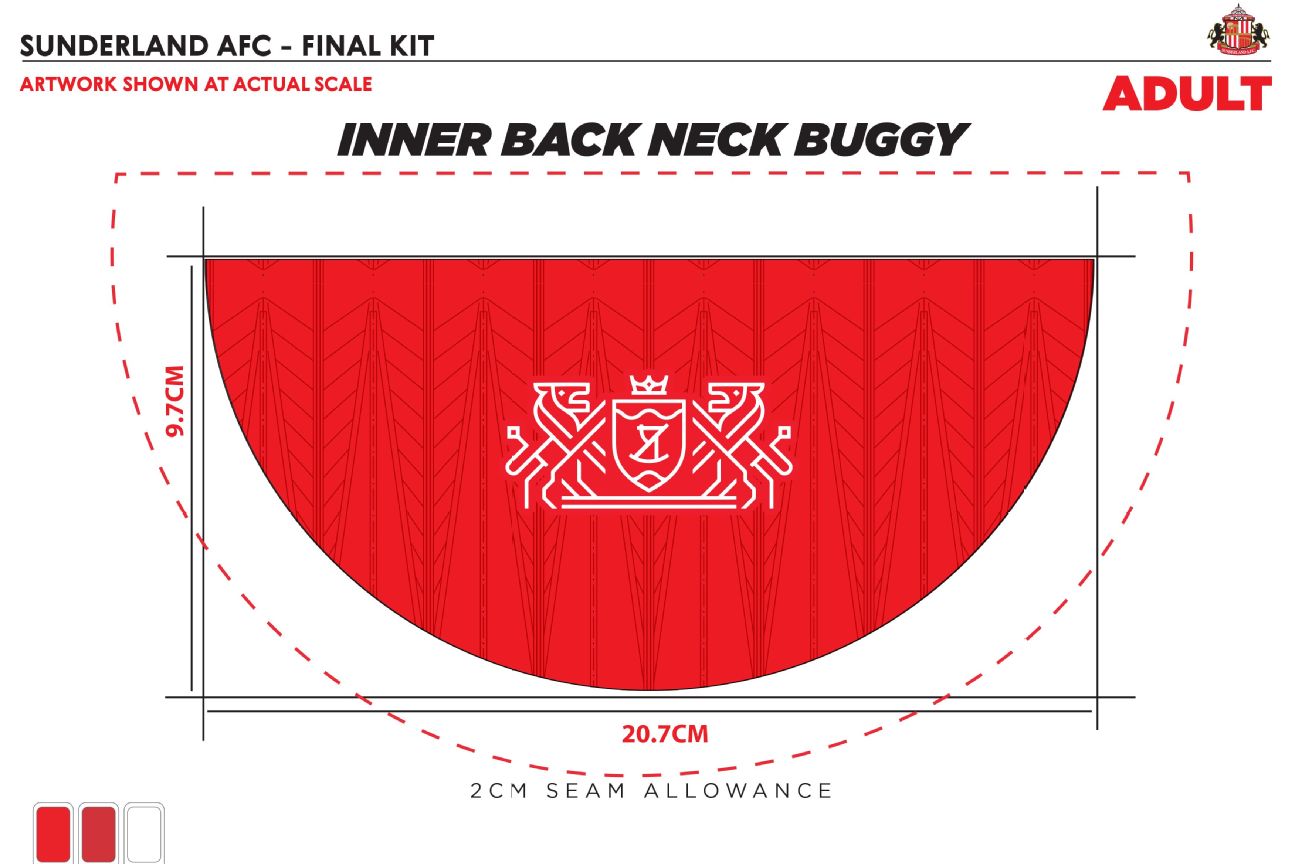
The semicircular section on the back of the neck is known as the “buggy.” For the Sunderland home kit, the logo of the bridge project is added on the outside, and the emblem of the city of Sunderland on the inside.
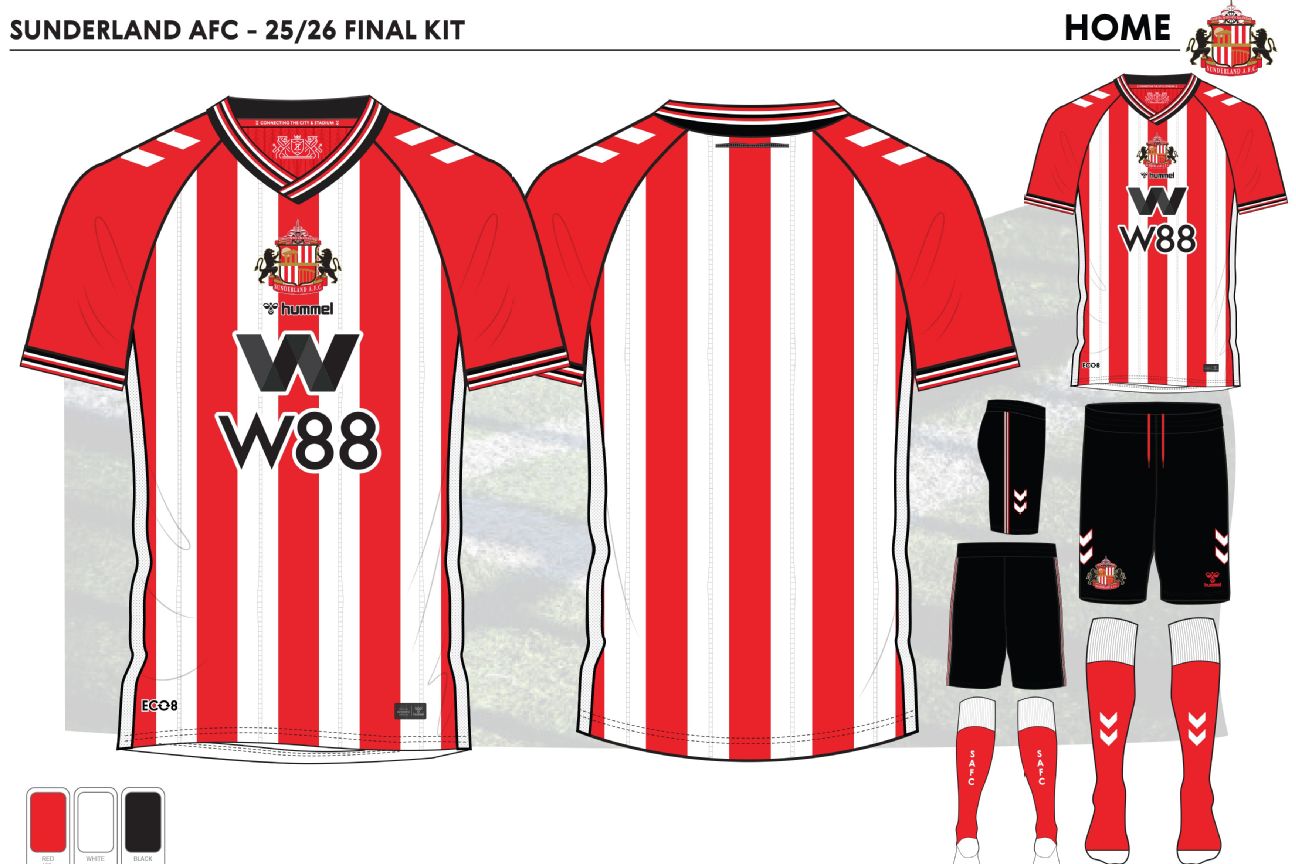
The whole design is brought together with a distinctive touch via the central placement of the sponsor logos and club crest (a subtle visual reference to the Niall Quinn-Kevin Phillips era of the late 1990s). The motto inside the collar encapsulates the concept of the shirt: “Connecting the city to the stadium.”
Step 3: Launching the kit
And so, after many months spent finessing the design to the point it getting greenlit for manufacture, the new Sunderland home kit was ready to launch. As you might expect, it’s a very nerve-wracking time for those involved as fans finally lay their eyes on the new kit for the first time.
“For me, there’s no better feeling than when a shirt drops and it lands favorably with fans because I know it’s the thing that they will buy more than anything else,” said Bruce.
“If there’s a good feeling among the fans, they’re going to buy it and they’re going to wear it with pride. And there’s nothing better for me than driving around Sunderland and seeing young kids wearing the Sunderland kits.”
1:30
Sunderland unveil retro inspired home jersey for Premier League return
Sunderland launch their new home kit with a centrally positioned crest for the first time since the 1990s.
Obviously the launch campaign also has to do the new kit justice, with Sunderland making the big reveal with a variety of marketing materials, including a great promo video (featuring a cameo from Phillips) to showcase both the kit itself and a few glimpses of the conceptual design behind it.
The launch also marks the end of a long and sometimes laborious road for the designers, although the sheer elation at seeing your handiwork being worn on a Premier League pitch never gets old.
“Just from an emotional side, you do so many different kits, you can’t love them all, but it feels great when the season starts and you’re watching a game on TV and suddenly you’re seeing fans go to the stadium wearing the shirt,” said Revell. “It’s a kind of a relief too; we got the shirt done on time!
“It’s great once people are buying it. It’s lovely. It’s also nice seeing the kids buy it. I’ve got a little one and it’s really nice seeing them wear a full kit. That’s the best part of it, to be honest.”
ESPN FC senior editor Tony Mabert contributed to this report
